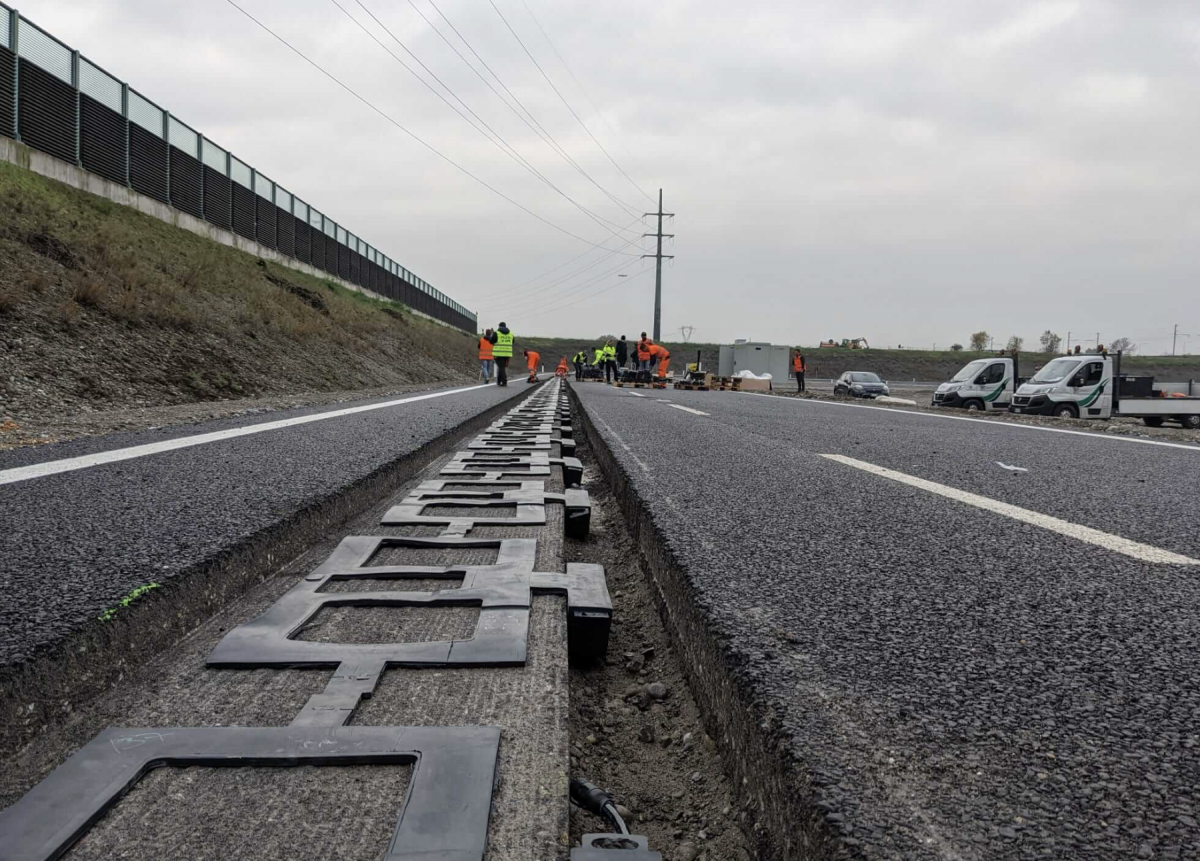Intermodal refers to the movement of freight from one place to another using more than one mode of transport. With third-party logistics (3PL) providers coordinating the movement of freight across trucking, railroad, and ship-line operators, intermodal transportation has provided a cost-effective, smooth, fuel- and freight-efficient, safe, and environmentally-friendly option to customers who traditionally opted for over-the-road (OTR) transportation.

While OTR has been known to be a more secure and transparent mode of transportation thanks largely to software solutions, emerging technologies in intermodal (which encompass supply chain visibility and real-time data monitoring) have made the process as transparent, reliant, and efficient as OTR transportation.
Standardised freight containers are used in intermodal, which are easily transferred from one mode to the other, and therefore eliminate the risks arising from direct handling of the shipment.
One of the biggest drawbacks of intermodal has been data collection and monitoring. As intermodal uses a combination of different transportation modes, it partners with a host of companies to transport its shipment. In most cases, each company (mode of transport) has its own technology systems and data capturing capabilities, which in turn makes it difficult for the client to monitor, collect, and assess data regarding its shipment in a uniform manner. However, with companies beginning to partner in real-time on a Cloud-networked platform, it has made the process of collecting, monitoring, and evaluating data more efficient and effective.


Case studies
- Ocean Spray, a leading US-based fruit juice and food manufacturer has shifted a number of its OTR operations to intermodal and witnessed a decrease in both its logistics costs as well as carbon footprint.
- One of Ocean Spray’s largest logistical expenses was the shipping of its products more than 1,000 miles from its New Jersey distribution centre to its Florida distribution centre through OTR. Coincidentally, both the distribution centres were about 65 miles from rail terminals. On the other hand, one of Ocean Spray’s largest competitor, Tropicana, used these rail terminals to ship orange juice in refrigerated containers from Florida to New Jersey in the north. These rail cars, however, returned empty, which led to high costs and carbon footprint for Tropicana.
- Wheels Clipper, Tropicana’s 3PL providers identified an opportunity for collaboration between the two competitors. It proposed to Ocean Spray to partner with Tropicana to operate an intermodal lane between Florida and New Jersey, wherein Tropicana could use the lane to ship its orange juice to New Jersey, while Ocean Spray could take advantage of the same lane to ship its products south, from Jersey to Florida. Switching to intermodal helped save Ocean Spray close to 40% of its transport costs compared with its previous OTR approach. Moreover, it helped the company reduce its greenhouse gas emissions by close to 65%.
On similar lines, several other companies (such as GE Lighting and Jelly Bean Candy Company) have also switched to intermodal, which has resulted in significant costs savings. - Jelly Belly Candy Company has its main factory in California but has its largest distribution centre in Wisconsin. The company traditionally used truckloads and LTL for most of its shipments between these destinations, with only 30% being intermodal. In 2012, the company shifted to 100% intermodal transportation. With rail being relatively less expensive than over-the-road, and yet matching the speed of over-the-road service 95% of the times, the company claims it has managed to save more than US$500,000 annually by making this shift.
- GE Lighting also increased its use of intermodal by 25% during 2010-2012. While the company’s shipments from LA and Long Beach to its factory in Tennessee take six days under intermodal as compared with five days (via truck), the company claims that the new approach has been equally reliable and has resulted in a reduction in freight costs by about 40%.
Intermodal is not void of challenges!
Despite the host of benefits being offered by intermodal, it comes with its own set of operational challenges, which require immediate attention and innovation from both 3PL players and terminal operators.
Firstly, there is growing congestion at ports owing to larger vessel sizes (which have higher capacity load and in turn require greater number of trucks to load/unload) as well as a reduction in the number of days shippers are allowed to keep containers on ports before being charged demurrage charges. This is resulting in growing traffic at ports, thereby reducing the number of round trips made by a drayage driver in a day, which in turn reduces productivity and makes intermodal lose a portion of its cost advantage. While the main solution to this lies in underlying development of ports (including better facilities and use of latest technology), several 3PL players are also finding innovative solutions to beat the congestion issues. To minimise delays due to traffic at the ports, several intermodal providers, such as ASF International, employ two sets of drivers, the first hauling containers between customers’ sites and the trucking yard and the other carrying containers between the yard and the port, thereby ensuring higher productivity levels.
A growing chassis crisis is also impacting intermodal efficiency. In order to make their operations leaner, shipping carriers have stopped providing truckers with chassis for inbound shipments since 2010, and in turn sold their chassis inventory to leasing companies. Due to this, truckers and shippers now need to rent chassis for their freight at a fee from leasing companies. Moreover, several times, chassis is not easily available as they are stacked at inconvenient locations (where freight is dropped off). Poor availability of chassis sometimes results in delayed truck cargo deliveries, which in turn impacts overall productivity of the logistics operations. However, to overcome this problem, shippers and trucking companies are investing in chassis locating software (such as ChassisFinder), which helps truckers search for chassis by location, date, quantity, and type, and then lets them reserve their desired equipment for pickup from any of their pickup points. Moreover, several trucking companies (such as Schneider) are investing in their own fleet of chassis to ensure constant and quality supply to their customers.
In addition to these operational issues, there are some fundamental issues that a shipper must consider before choosing intermodal. It does not make sense to use intermodal for distances, of less than 700 miles. Moreover, the quality of intermodal service to a large extent depends on the level of rail infrastructure in the country in question.
Intermodal infrastructure – good in some regions, bad in other markets
Intermodal is significantly popular in North America and Western Europe, owing to well-established rail infrastructure as well as ongoing investment in intermodal terminals and facilities. US rail-intermodal volumes reached 13.5 million containers and trailers in 2014, registering a 5.5% rise over 2013 levels. Rail intermodal tonnage is further expected to grow at a CAGR of 5.5% during 2014-2019 and 5.1% during 2019-2025 in the USA.
While intermodal is also slowly gaining momentum in Eastern Europe and emerging Asian economies (such as India and China), major infrastructural improvements are required in these countries (especially rail infrastructure) to accrue the underlying benefits of intermodal, as in the case of the USA.
Case study: China
While China has witnessed a significant rise in its freight transportation (with freight ton-kilometres growing at an annualised rate of 10.4% during 1998-2013), the majority of freight transport is facilitated by road. During 2008-2013, rail freight ton-kilometres in China recorded a CAGR of 5.8%, close to one-third of the growth registered by freight ton-kilometres transported over the road during the same period (16.7% CAGR). Moreover, in 2010, only about 1.3% of China’s maritime port container throughput was moved to and from ports via rail as compared with trucks, which accounted for 85% of the containers that entered or left the ports.
However, with growing demand for intermodal operations (based on its success in North America and Europe), increasing manufacturing activities in inland China, coupled with growing road congestion, high costs of highway tolls, and poor service levels from trucking companies, there is a growing focus on developing the country’s freight rail infrastructure.
To this effect, CRIntermodal, a joint venture between China Railways Corporation (CRC) and four private sector partners, has developed a network of nine rail intermodal terminals in Kunming, Shanghai, Chongqing, Chengdu, Zhengzhou, Qingdao, Dalian, Wuan and Xi’an and plans to complete nine more at Harbin, Shenyang, Beijing, Tianjin, Lanzhou, Urumqi, Ningbo, Guangzhou and Shenzhen. Furthermore, CRIntermodal acts as a fully-fledged logistics service provider offering terminal handling, intermodal unit train operations, and value added logistics services to/from major domestic markets.
While these are welcome developments, time will tell whether China manages to replicate the benefits accrued from intermodal operations in countries with developed infrastructure.
Is intermodal a game changer?
In times when companies are looking to drive up efficiencies in their supply chain operations, intermodal shines out for its cost advantage, reliability, and environmental benefits. Ongoing intermodal infrastructure development across nations along with constant innovation in technology, have further driven up freight efficiency for companies.
However, much needs to be considered before companies shift completely from OTR to intermodal, the first thing being the distance of shipments – as noted above, any shipment less than 700 miles is not feasible on intermodal. Also, intermodal is often not as fast as OTR, thereby making it important for customers to maintain a slightly higher level of inventory in their supply chain to accommodate unexpected demand spikes.
Despite the shortfalls, it is important to note that intermodal is a serious contender when it comes to companies looking at achieving greater freight efficiency. If it becomes ‘the only option’ in the long run, only concrete on-the-ground changes will help prove that. For now, at least, companies using intermodal for their freight transportation seem to have a slight competitive edge.
This article appeared in the Q1 2016 issue of Automotive Megatrends Magazine. Follow this link to download the full issue.



